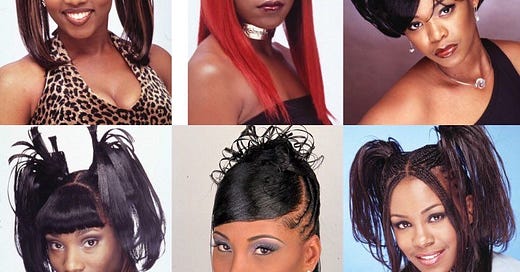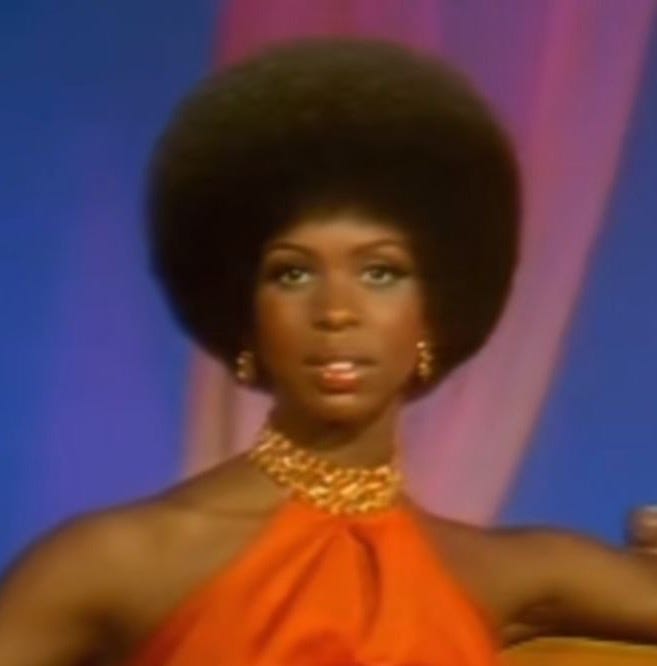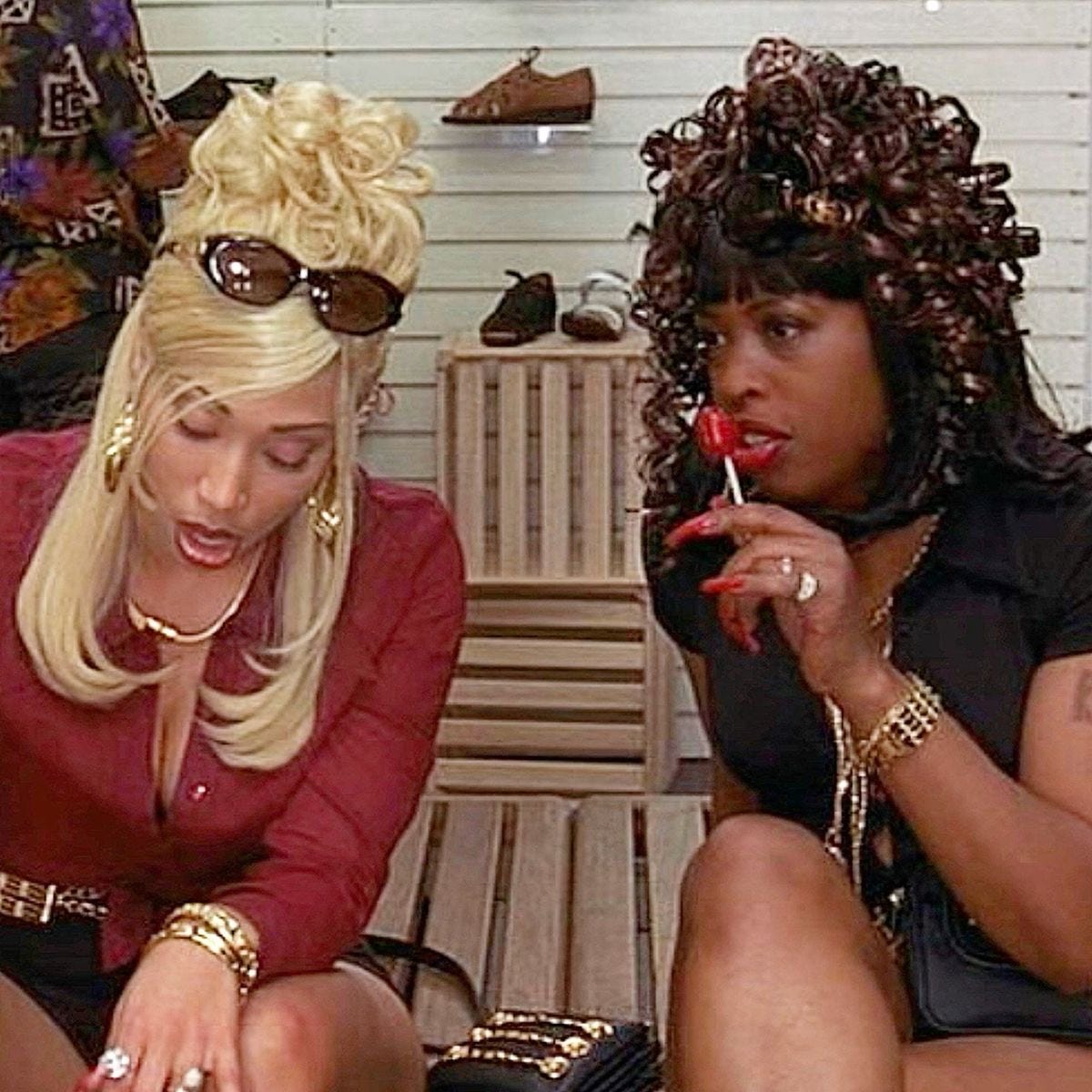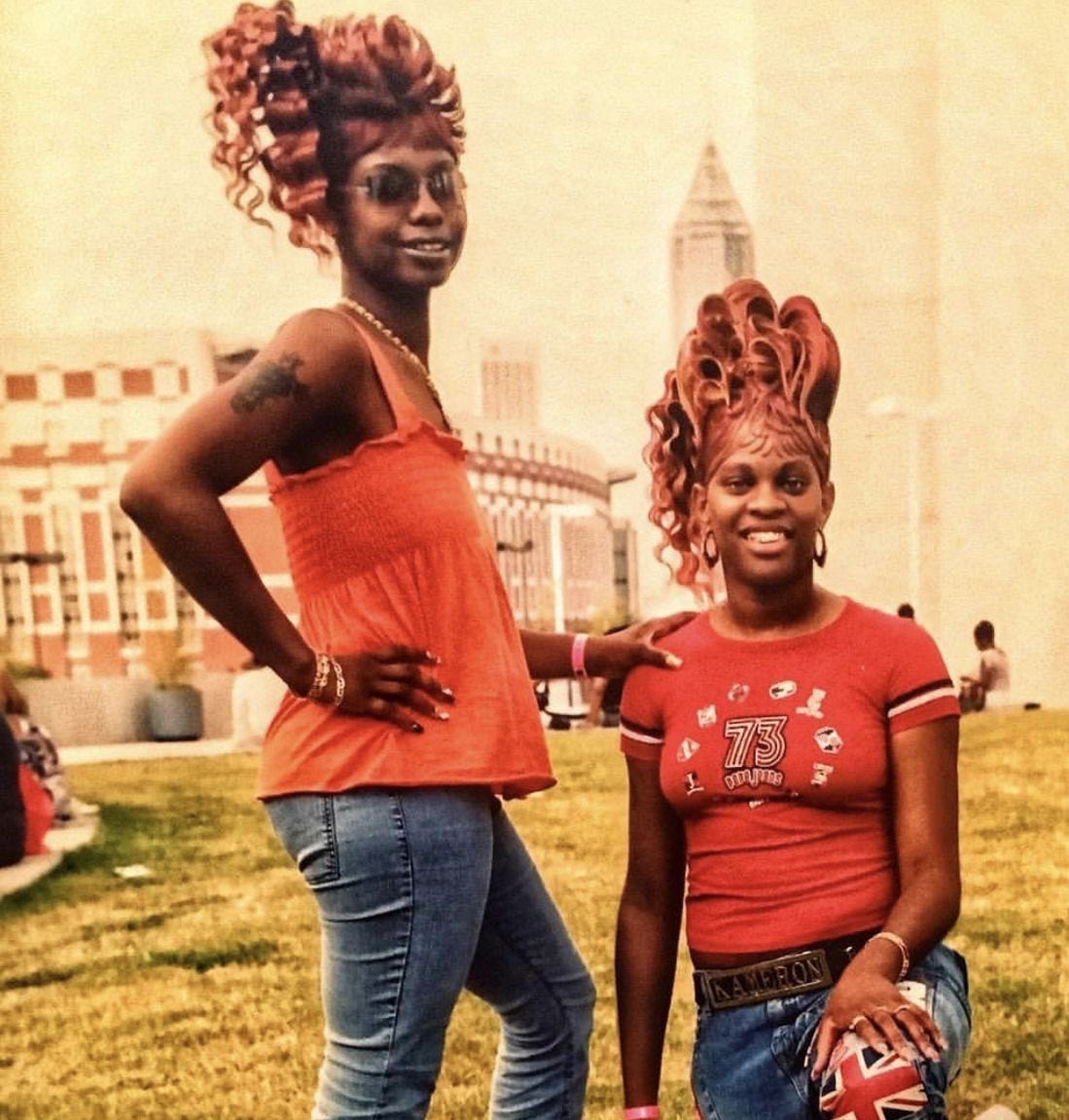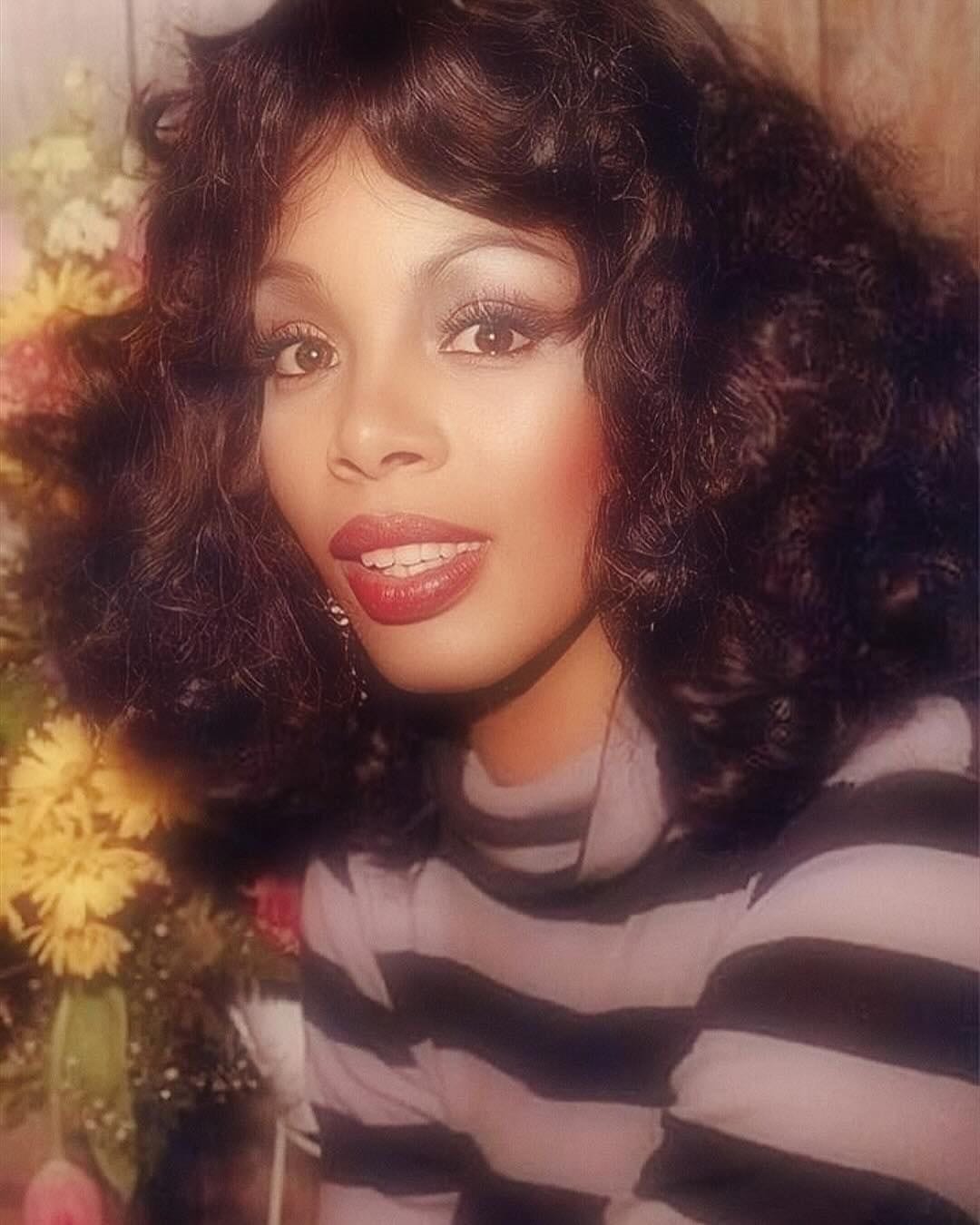A Black girl’s hair journey starts at birth—sometimes tumultuous, sometimes easy, but always something to think about. When I was in middle school, I used to marvel at how easy a white girl seemed to have it with her hair. Just wash, condition, dry, maybe a quick brush, and that was it (in middle school, anyway—grown women, regardless of race or ethnicity, all have some sort of hair routine). My hair, on the other hand, was processed almost biweekly, set on rollers, and stuck under the dryer for what felt like forever. Sometimes I had to sleep in rollers, Bantu knots, or twists—there was always something new to try!
Girl, my momma stayed in my head, always working her magic. For those who know, my momma is a cosmetologist, so I naturally became her happy and obedient test dummy. And thank God for that! She didn’t just style my hair—she instilled confidence in me. I’ll never forget when she told me, “It’s just hair.” From that moment on, I felt free to take all kinds of liberties expressing myself through it. I was in middle school when I first colored my hair (with my momma’s help, of course)—it was blue! A decision I don’t regret to this day. But we’re not here to talk about my hair journey. Let’s get into it, suge!
Black women’s hair is far more than a physical feature; it is a profound expression of artistry, identity, and culture. From ancient African traditions to modern-day movements, the journey of Black hair weaves a narrative rich with history, resilience, and beauty. For centuries, Black women and girls have used their hair as a canvas to express individuality, connect with their heritage, and reclaim their power in a world that often seeks to stifle their unique radiance.
The story of Black hair begins in Africa, where hair played a pivotal role in identity. In many African societies, hairstyles conveyed a person’s age, marital status, social rank, religion, and even tribe. Hair was treated as a sacred extension of the self, and grooming was often a communal act. Women sat together, braiding and styling hair while sharing stories and wisdom, reinforcing bonds that strengthened their communities.
Intricate styles like cornrows, bantu knots, and twists were not only aesthetic but also practical, protecting the hair from the harsh sun and allowing for ease of maintenance. These styles have endured through generations, adapting but never losing their significance.
However, the transatlantic slave trade disrupted these practices. Enslaved Africans were often shaved, stripping them of their cultural identities. Despite this erasure, Black women carried their traditions in their hearts and began to recreate them in new ways. Braiding patterns were even used as secret maps for escape routes during slavery, underscoring the resilience and ingenuity embedded in Black hair culture.
In the Americas, Eurocentric beauty standards began to dominate, marginalizing natural Black hair and labeling it as unkempt or undesirable. During the 18th and 19th centuries, enslaved and free Black women often covered their hair with scarves or wraps, whether by law, social pressure, or for practicality. While these coverings were born of oppression, they became symbols of defiance and elegance, as women adorned them with intricate patterns and vibrant colors.
Post-slavery, Black women continued to navigate a world where assimilation often meant survival. Straightened hair became a way to gain social and economic opportunities in a society that prized conformity to white beauty standards. Products like Madame C.J. Walker’s hot combs and pomades, designed to straighten hair, became staples in many Black households. While some embraced these tools as avenues for self-expression, others saw them as symbols of the pressure to conform.
The 1960s and 70s ushered in a wave of resistance with the Civil Rights and Black Power movements. The afro emerged as a powerful political statement, symbolizing pride, self-love, and defiance against systemic oppression. Icons like Angela Davis wore their natural hair unapologetically, inspiring millions of Black women to embrace their kinks, coils, and curls.
During this time, slogans like “Black is beautiful” challenged the narrative that Black hair had to be tamed or altered. The afro became a crown, a visible assertion of identity and pride. It was a turning point, but the battle for acceptance was far from over.
In recent decades, Black women have continued to push boundaries, reclaiming and redefining what it means to wear their hair. The natural hair movement has experienced a resurgence, with women around the world ditching relaxers in favor of celebrating their natural textures. Social media has played a pivotal role, with platforms like YouTube and Instagram fostering communities where women can share tips, tutorials, and encouragement.
Protective styles like braids, twists, locs, and wigs have become mainstream, allowing women to experiment with their looks while prioritizing hair health. Artists and stylists have elevated Black hair into high art, creating styles that are showcased on runways, red carpets, and magazine covers. The artistry is undeniable, blending tradition with innovation to create looks that are both timeless and futuristic.
Despite this progress, Black hair discrimination persists. The policing of natural hair in schools and workplaces has sparked debates about autonomy and systemic bias. Laws like the CROWN Act (Creating a Respectful and Open World for Natural Hair) have been enacted in some states to protect against hair-based discrimination, but the fight for widespread acceptance continues.
The beauty of Black hair lies in its versatility and depth. It can be coiled, curled, braided, twisted, straightened, or left to grow freely. Each strand is imbued with history, and each style tells a story. Whether adorned with beads, shells, or ribbons, or styled into gravity-defying shapes, Black hair is a testament to creativity and resilience.
Black women and girls’ hair often evokes an otherworldly quality—styles that defy gravity and seem to transcend human imagination. This beauty is not just aesthetic but symbolic of the unyielding spirit of a people who have turned their pain into power, their oppression into art.
Today, movements like #BlackGirlMagic celebrate this beauty, encouraging Black women and girls to take pride in their hair and all that it represents. Celebrities like Lupita Nyong’o, Solange, and Viola Davis have embraced their natural hair on global stages, challenging stereotypes and inspiring others to do the same.
For Black women and girls, hair is more than a personal choice—it’s a statement of identity, a connection to ancestors, and a reclaiming of autonomy. It is both deeply personal and inherently political, a form of self-expression that demands respect in a world that too often seeks to diminish it.
The artistry of Black hair is unmatched. From the intricate cornrows passed down through generations to the bold avant-garde creations seen on today’s fashion runways, it is a living testament to the creativity, resilience, and power of Black women.
In every strand lies a legacy. In every twist, a story. Black women’s hair is not just hair—it is history, beauty, and a crown that will always shine.
I’ll always be a supporter of Black girls doing whatever they want with their hair. I have to be honest, though—I think our hair is better (hear me out!). Black hair grows up toward the sun—that’s so poetic. Cherish your hair, sha. I’ll see you next time!


